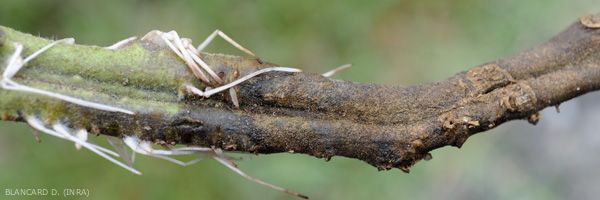
Kleb., (1921)
- classification : Fungi, Ascomycota, Dothideomycetes, Pleosporomycetidae, Pleosporales, Incertae sedis
- synonymie : Phoma lycopersici (Plowr.) Jacz., (1898)
- English name: Didymella stem canker and fruit rot
Given the difficulties encountered in identifying the species of Phoma , it is quite difficult to know precisely the incidence of Didymella lycopersici in the world. It has been reported in many countries, especially in Europe (Great Britain, Germany, France, the Netherlands, Italy, Spain, Norway ), where it can attack both field crops and under cover. , both in ground and above ground. It is also described in New Zealand, in India, in Africa, and in particular in Morocco, in several American countries (Mexico, Canada, United States), in Asia
Its severity in crops varies greatly from country to country and depending on the type of production. Often sporadic, it can be particularly serious and cause extensive damage to fruits and tomato stalks in some farms where the disease is well established.
This fungus is present in France , its incidence is only occasionally serious. It is observed as well in amateur gardens as in heated greenhouses where it persists easily.
Several Phoma spp. have been described on nightshades around the world. On tomato , let mention us Pyrenochaeta glomerata (Corda) Wollennw. & Hochapf. and P. exigua Sacc. 1879, both rather polyphagous and also affecting other botanical families. Two other species, P. destructiva Plowr. and P. lycopersici , also affect Lycopersicon esculentum . They are rather specialized in one or a few hosts of the Solanaceae family and are morphologically very close; their respective parasitic specificities are quite controversial. These two species, as well as the species exigua , could be differentiated by virtue of their morphological characteristics, and in particular those of their colonies on PDA medium.





